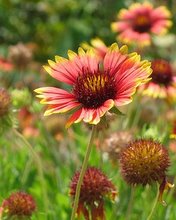 The Rashtrapati Bhavan, Rajpath, India Gate, Parliament House and Teen Murti are a part of the capital better known as Lutyens Delhi.
The Rashtrapati Bhavan, Rajpath, India Gate, Parliament House and Teen Murti are a part of the capital better known as Lutyens Delhi.Sir Edwin Lutyen, British architect and visionary, was called upon to design a new capital for the British rulers of India. His brief was unambiguous, the new capital should match, if not improve upon, the grandeur and vastness of the world’s best cities, yet capitalise on the intricacy of the Indian architecture.2800 acres of land was carved outside the old city, away from the hustle and bustle of Chandni Chowk and the ramparts of the Red Fort.
With a free hand to draw as he pleased, Lutyen sketched out the flowing lines of New Delhi - the Rashtrapati Bhavan (President’s House), the Parliament, the magnificent drive or Raj Path from the President’s house to the India Gate and the Canopy beyond for the statue of King George.
Offices of the British Resident, the North and the South Blocks, flanking the side of the Rashtrapati Bhavan melted into the buildings that housed the local administration. Deep set and overlooking the large greens dotted with small streams and fountains and planted with the saplings of the shade-giving and water-conserving Jamun tree, the gracious India Gate lawns were regal in their splendour.It took nearly twenty years to construct these and the 112 bungalows, built beyond the President’s house, with pillars and porticos that provided shade during the scorching summer months. Truly it was the most beautiful city planned by the British. The city was completed in 1931.
Rashtrapati Bhavan
This red stone building, topped by a copper dome is perched on the top of Raisina Hill. Previously the home of the British Viceroy it is now the official residence of the President of India (Rashtrapati in Hindi). It also houses the offices of various administrative departments in two sections of the complex called 'North Block' and 'South Block' On days of national import, such as Independence Day (August 15), the Bhavan is decorated with lights.
India Gate
India Gate was built to immortalize the 85,000 soldiers who died in World War II. It houses the Amar Javan Jyoti, the fire of immortal soldiers. The Amar Jawan Jyoti is guarded by the flags of the Indian army, navy and air-force. The structure is made of black marble and has four perpetually lit fires at its four corners. The small structure at the centre has "Amar Jawan Jyoti" inscribed on it (in Hindi) and a rifle topped with the army hat (used during World War II) emerging from it.
The Parliament (Sansad Bhavan)
The Indian Parliament is divided into two houses - the upper house is known as the Rajya Sabha and the lower house is known as the Lok Sabha. The Lok Sabha has 550 seats. 530 members are representatives of the Indian states and 20 members represent Union Territories (territories governed by the Central (Federal) government). The Rajya Sabha has 250 members, 238 of which represent states and Union Territories and the 12 nominated members are nominated on the basis of eminence in the fields of arts, sciences, literature etc. The Parliament is basically a round building. It is located near Rashtrapati Bhavan, and can be seen from Rajpath.


2 comments:
Informative. good selection.
Manoj
What are other places covered under Lutyen's Delhi?
--Mansi
Post a Comment